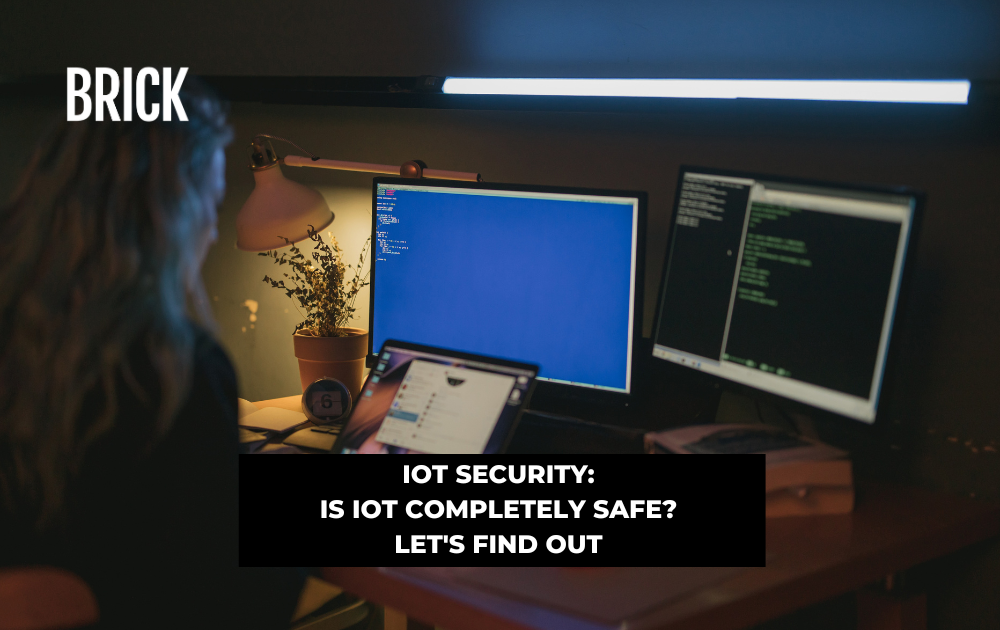IoT Security: Is IoT completely safe? Let's find out
The Internet of Things (IoT) is booming and as it is growing, so are the cyber threats. It’s fundamental to know how to protect ourselves. So, let's talk about its security!

Introduction
The Internet of Things (IoT) is blooming, and it doesn't look like it will slow down anytime soon.
IoT was already talked about in the 80’s, but technology wasn’t fully developed. The term took off in the late 90’s when a scientist coined down the term. As IoT is growing, so are the cyber threats, and it’s fundamental to know how to protect ourselves from intrusion by hackers.
By being careful, we can make sure we're protected and use all the cool stuff IoT has to offer! So, let's talk about its security!
Problem description
Too much data
The Internet of Things collects data from millions of devices. This amount is expected to increase with the growth of 64 billion IoT devices by 2025. While this data has hidden potential, there are also risks associated with having too much data. Data overload can lead to security threats, increased costs, confusion and difficulties in deciding what to do with it.
Additionally, too much data can lead to a high signal-to-noise ratio, where important information gets lost in the noise. Referring back to Lifewire: “A signal-to-noise ratio compares a level of signal power to a level of noise power. It’s most often expressed as measurements of decibels (dB).” This can negatively affect businesses' security, profitability, and performance. It's important to carefully consider what data is necessary to collect and use to mitigate these risks.
Unwanted public profile
According to a recent survey by Deloitte (2022), many people are proactive in protecting their online security.
More than half of smartphone owners (54%) said they were somewhat worried about privacy and security on their devices, and 49% were worried about tracking. Even IoT device users (e.g. fitness trackers, smartwatches, and smart homes) were concerned, with 52% reporting worries about their security.
34% of respondents use two-step authentication for apps and services, and 32% turn off location-based services on their devices. Furthermore, 15% had their social media accounts hacked, 13% had their credit cards hacked, and 10% fell for an online scam.
Approximately 8% of those surveyed had their bank accounts hacked or their location misused. Younger people were more likely to fall for scams, with 16% of Zoomers (Generation Z) falling for an online scam compared to 7% of matures and 4% of Boomers.
These numbers show that many people are worried about their online security and the collection of their data. It's important to be aware of these concerns and take steps to protect ourselves online.
Eavesdropping
Eavesdropping is when someone secretly listens to you or your surroundings. It can happen on your laptop, phone, or even your smart home devices. In computer security, eavesdropping means that a harmful third party is intercepting communication between two parties, such as the Wireshark program in 2011, that was used to eavesdrop on android users. It allowed hackers to view private data, modify, steal and delete information.
What is IoT Security?
IoT security is about protecting cloud-connected devices. If we don't protect our devices, they can be hacked and that can cause a lot of problems. It is crucial for safety reasons that developers and manufacturers pay attention to security when designing and creating IoT devices. Smartphones and tablets are different from IoT devices because they connect automatically to the cloud.
Common IoT security challenges
Like any other industry, IoT faces many security challenges. Although its security has developed over the years, people still express concerns. By understanding the security challenges within IoT, we can work towards improving its safety and security.
Open-source code vulnerabilities
Open-source software is more likely to have security issues compared to other types of software. It uses components that may not have good security features, or are not properly integrated. In addition, the code may not be written well, making it easier for attackers to take advantage of the software. This increases the risk of attackers gaining access to your resources, data, and systems.
Limited security integration
There’s a wide range of IoT devices that do not support the same integration services. Therefore, merging IoT devices into security systems can be challenging, if not impossible in some cases.
IoT devices are unable of having a correct inventory of what requirements are fundamental to be fully monitored and secured, due to the lack of knowledge from users regarding IT departments.
Weak passwords
A newly bought IoT device often comes with a pre-set password that most people don’t change. In cases where they do change the password, it’s often changed to something that can be easily guessed. The lack of security measurements can make it easier for intruders to attack the device.
How Brick and powerbanks relate to security measurements
At Brick, we're a part of the IoT. Our stations use about 0.5 megabytes of data per day. We collect as little data as possible about our users. The Brick powerbanks and stations do not have tracking or GPS features installed. Our partners can see data about the rental & station statistics, which helps them improve and expand Brick in their local market.

IoT Security: What we can do!
IoT innovation is great and is opening new doors for both users and professionals. Security can be a pain point and still has a long way to go. Safety is important in our digital world, we all want to avoid intrusion and cyber attacks at all costs.
Simple steps like changing default passwords can help minimize the risk of attacks. Brick collects minimal data and we are aware of these concerns. If you want to learn more about how we use IoT or how our powerbanks work, continue reading our article!




